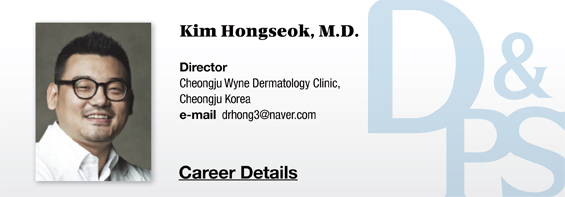
Melanocyte-cytotoxic Agent
Azelaic Acid
Azelaic acid is frequently used in topical treatment of post-inflammatory pigmented lesions. Many studies have examined the outcome of topical application of azelaic acid on pigmented lesions.[i]. It inhibits DNA synthesis of overactivated melanocytes and energy production as well as partially inhibits tyrosinase acitivity. However, the exact mechanism in which it brings improvement is not fully understood[ii]. Azelaic acid reduces the oxidative tissue damage inherent in inflammatory lesions and melanogenesis[iii]. In in vitro study, azelaic acid was shown to enable hydroxyl radical scavenging and inhibit oxyradical toxicity. It was reported to be a competitive inhibitor of tyrosinase.
Topical application of azelaic acid in melasma was found to be more effective than topical hydroquinone without any side effects[iv]. A lotion containing 20% azelaic acid and 15~20% GA used in hyperpigmented lesions of darker skin was found to be as efficacious as 4% HQ. A UVB camera study of pigmented lesions showed that azelaic acid improved subclinical hyperpigmentation better than GA[v].
Azelaic acid is also widely used in acne and has excellent efficacy and safety in acne and post-acne pigmentation in darker skin tones[vi]. Darker skin tones are more susceptible to frequent hyperpigmentation and post-acne hyperpigmentation. Twice daily application of 15% azelaic acid in mild to moderate acne-related pigmentation was found to be effective[vii].
Mequinol
Mequinol is a HQ derivative and is also known as 4-hydroxyanisole. Its mechanism of action is not fully understood, however, is assumed to be a competitive inhibitor of melanogenesis, a substrate of tyrosinase. Topical application of 2% mequinol/0.01% tretinoin in 216 patients with solar lentigine was found to be more effective than 3% HQ.
[Advertisement] FCR® (Fractional Prickle CoralCalcium Regentron) – Manufacturer: (www.illglobal.com)]
Monobenzone
Monobenzone is monobenzyl ether (MBEH) of HQ and can cause permanent depigmentation in normal skin. When combined with tretinoin, its depigmenting action is accelerated. Monobenzone is used to depigment the remaining normal skin in patient with vitiligo universalis[viii][ix]. In the concentration of 20%, it infiltrates melanocytes in the form of quinine, causing permanent damage. Twice to three times daily application over pigmented lesions bring depigmentation in 6-12 months of treatment. Side effects such as contact dermatitis and conjuctival melanosis, etc. have been reported.
References
[i] Nguyen QH, Bui TP. Int J Dermatol. 1995 Feb;34 (2):75-84. Azelaic acid: pharmacokinetic and pharmacodynamic properties and its therapeutic role in hyperpigmentary disorders and acne.
[ii] Fitton A, Goa KL. Drugs. 1991 May;41 (5):780-98. Azelaic acid. A review of its pharmacological properties and therapeutic efficacy in acne and hyperpigmentary skin disorders.
[iii] Passi S, Picardo M, Zompetta C, et al. Free Radic Res Commun. 1991;15 (1):17-28. The oxyradical-scavenging activity of azelaic acid in biological systems.
[iv] Verallo-Rowell VM, Verallo V, Graupe K, et al. Acta Derm Venereol Suppl (Stockh). 1989;143:58-61. Double-blind comparison of azelaic acid and hydroquinone in the treatment of melasma.
[v] Kakita LS, Lowe NJ. Clin Ther. 1998 Sep-Oct;20 (5):960-70. Azelaic acid and glycolic acid combination therapy for facial hyperpigmentation in darker-skinned patients: a clinical comparison with hydroquinone.
[vi] Woolery-Lloyd HC, Keri J, Doig S. J Drugs Dermatol. 2013 Apr;12 (4):434-7. Retinoids and azelaic acid to treat acne and hyperpigmentation in skin of color.
[vii] Kircik LH. J Drugs Dermatol. 2011 Jun;10 (6):586-90. Efficacy and safety of azelaic acid (AzA) gel 15% in the treatment of post-inflammatory hyperpigmentation and acne: a 16-week, baseline-controlled study.
[viii] Rordam OM, Lenouvel EW, Maalo M. J Clin Aesthet Dermatol. 2012 Dec;5 (12):36-9. Successful treatment of extensive vitiligo with monobenzone.
[ix] AlGhamdi KM, Kumar A. J Eur Acad Dermatol Venereol. 2011 Jul;25 (7):749-57. Depigmentation therapies for normal skin in vitiligo universalis.
-To be continued




















